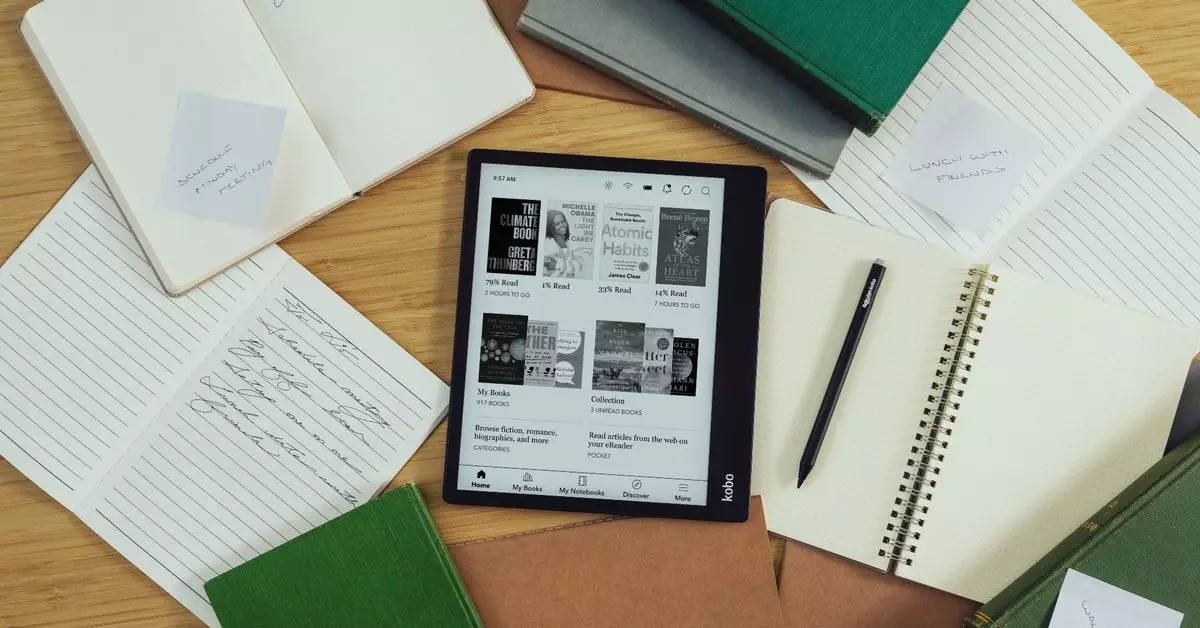In an era saturated with digital devices, the e-reader remains a staple for book lovers and tech enthusiasts alike. Amazon recently unveiled the Kindle Scribe, priced at $399.99, prompting a collective discussion about its capabilities in comparison to existing competitors. While the introduction of a new Kindle device often garners attention, it’s essential to dive deeper into the specifics, particularly when alternatives like the Kobo Elipsa 2E are making waves at a stunning discount of $349.99.
The discussion surrounding e-readers isn’t merely about features; it taps into the essence of the reading experience itself. With technological advancements, readers now seek devices that align with their lifestyles—integration, convenience, and functionality are key aspects that influence purchasing decisions.
One of the significant battlegrounds in the e-reader space is note-taking efficiency. The Kobo Elipsa 2E excels in this arena, allowing users to annotate directly on e-book pages. For those who enjoy the tactile sensation of writing in the margins, this functionality mimics traditional reading experiences perfectly. This device’s capability to recognize handwritten notes and translate them into typed text sets it apart, delivering a seamless transition between analog and digital interactions.
In contrast, the Kindle Scribe appears less user-friendly regarding note-taking. While it offers a similar function, the complexity involved in circumscribing phrases or organizing thoughts can become a deterrent. The Scribe’s various limitations might alienate users who value straightforward functionality during their reading sessions.
Storage capacity is another critical factor that influences e-reader performance. The Kobo Elipsa 2E boasts an impressive 32GB of memory, significantly outpacing entry-level Kindle Scribe options. This expanded capacity doesn’t just offer more space; it translates to a broader library of content, enabling readers to keep their favorite materials accessible without the need for constant deletions or management.
Moreover, the speed at which the Kobo converts handwriting into digital text surpasses that of the Kindle. E-readers serve as tools for both leisure and educational exploration; therefore, efficiency in functions like handwriting recognition is indispensable. Readers will undoubtedly appreciate this feature when jotting down notes or developing ideas on the fly.
Challenges with Compatibility: A Lasting Drawback
Despite the multiple advantages that the Kobo Elipsa 2E presents, it is not without drawbacks. The most notable limitation is its incompatibility with Kindle eBooks, which requires users to convert their libraries to access their beloved Kindle titles on the Kobo platform. This conversion process is cumbersome and may prove daunting to those heavily invested in the Kindle ecosystem.
Such hurdles pose significant challenges for new adopters who may be tempted to switch platforms. In a digital landscape where smooth transitions and connectivity are expected, this drawback can be a deal-breaker for many potential customers, requiring them to weigh the pros and cons carefully.
Beyond the realm of e-readers, gadgets like the Sony WH-CH720N headphones and Anker’s versatile USB-C chargers showcase the tech industry’s dedication to improving daily conveniences. For instance, the WH-CH720N headphones strike a balance between affordability and quality, although they lack the advanced noise-canceling capabilities of their higher-end siblings. Meanwhile, the Anker charging solutions appeal to consumers needing efficiency in power restoration, illustrating how gadgets are integrated into a user’s ambient experience.
Furthermore, the Blink Outdoor 4 security camera caters to those looking to safeguard their homes against intruders. With its competitive pricing and robust features—such as two-zone package detection and significant battery life—it reflects a growing focus on innovation in personal security technology.
With the evolving characteristics of e-readers like the Kobo Elipsa 2E juxtaposed against newer entrants like the Kindle Scribe, it becomes clear that readers are now privy to better options than ever. The right device should resonate with individual preferences and practical requirements, enriching the reading journey rather than complicating it. As technology develops, so too does the potential for personalized reading experiences, emphasizing that the future of reading is brighter and more interactive than ever.

